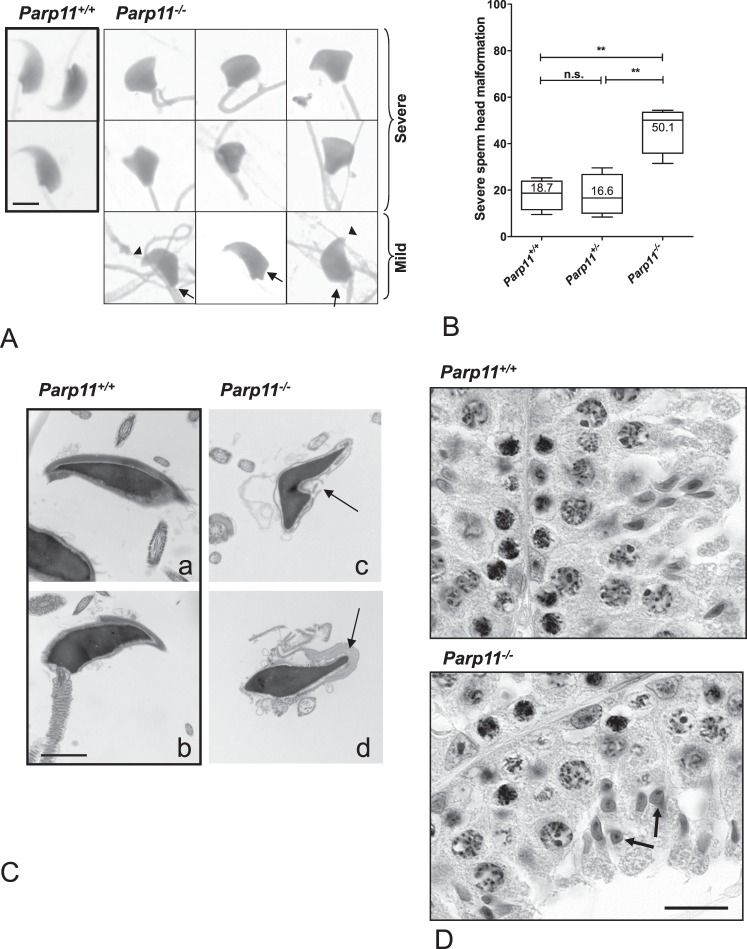FIG. 6.
Teratozoospermia in Parp11−/− mice. A) More than 50% of Parp11−/− sperm cells have conspicuously abnormal head shapes (“severe”). The remaining spermatozoa display various subtle malformations (‘mild”), such as blunt sperm tips (arrowheads), abnormal formation of the nuclear base (arrows), and abnormal attachment of the tail (arrows). Bar = 5 μm. B) Box plots of severe head malformation frequencies (see also “severe” in A). The lines in the boxes indicate median values; whiskers indicate the SEM (5th to 95th percentiles). A total of n = 658–677 sperm from four animals per genotype were evaluated. One-way ANOVA followed by Bonferroni multiple comparison test as well as Whitney-Mann analyses indicate a significantly higher frequency of malformed sperm heads in the Parp11−/− sperm samples. C) TEM imaging of sperm indicates that Parp11−/− sperm heads are malformed (arrows) but contain normally condensed chromatin, with normal intense staining of the nuclear material. Bar = 2 μm. D) Histological staining confirmed abnormal spermatid nuclear shaping in Parp11−/− testes consistent with the observed teratozoospermia phenotype in absence of other overt histological changes (arrows indicate abnormal spermatids in stage X tubules of Parp11−/− but not Parp11+/+). Bar = 30 μm.

